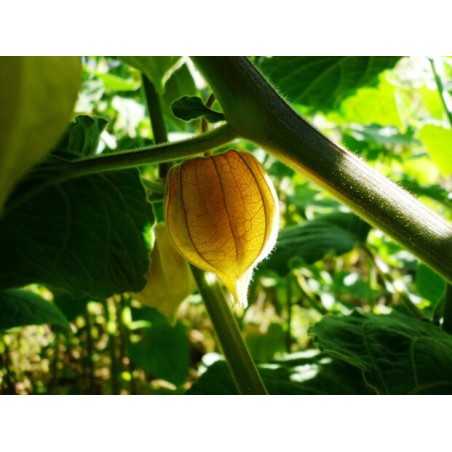






Physalis peruviana - Inca Berry
1 packet of 50 seeds
-
Physalis peruviana is a cousin to Physalis ixocarpa and Physalis pubescens
It is cultivated for its delicious fruit
Culinarily, it is one of the best produced by this familly of plants, and generally the only one marketed in the western countries
Very aromatic, tangy, and rich in vitamins A, B, and C, proteins, and phosphorus, the Inca Berry can be used raw, in desserts, for plates decoration, or dried for winter
Warning
As with other Physalis, the calyx is poisonous and should not be eaten
The Goldenberry has medicinal properties : Diuretic
The leaves of Physalis peruviana have medicinal properties : Anthelmintic
Physalis peruviana is a perennial in warm regions
Unfortunately, it won't survive winters in temperate climates, therefore, is grown as an annual in Europe
Very easy to cultivate, it requires a long growing season because it flowers late and ripens its fruits during the fall
The yield is, nevertheless, very high
-
Sow early, late March to mid-April, in godets, warm until germination (15 days), and plant in place at the end of May when the risk of frost is over
Full sun exposure, moist and deep soil, moderately fertile
In fertile soil, the plant has an exuberant vegetation detrimental to the production of fruits
In summer, mulch the soil around the plants to keep soil moisture, and water if your Inca Berry shows signs of thirst
Harvest the Inca berries when the calyx changes color and turns dry
You may also find ripe fruits on the ground : harvest them too, they are perfectly protected in their caly and good to eat most of the time
No disease, no pest
You might also like
Payment :
PayPal < 150 €
Check < 850 €
Bank Wire > 149 €
Thank you for your kind understanding